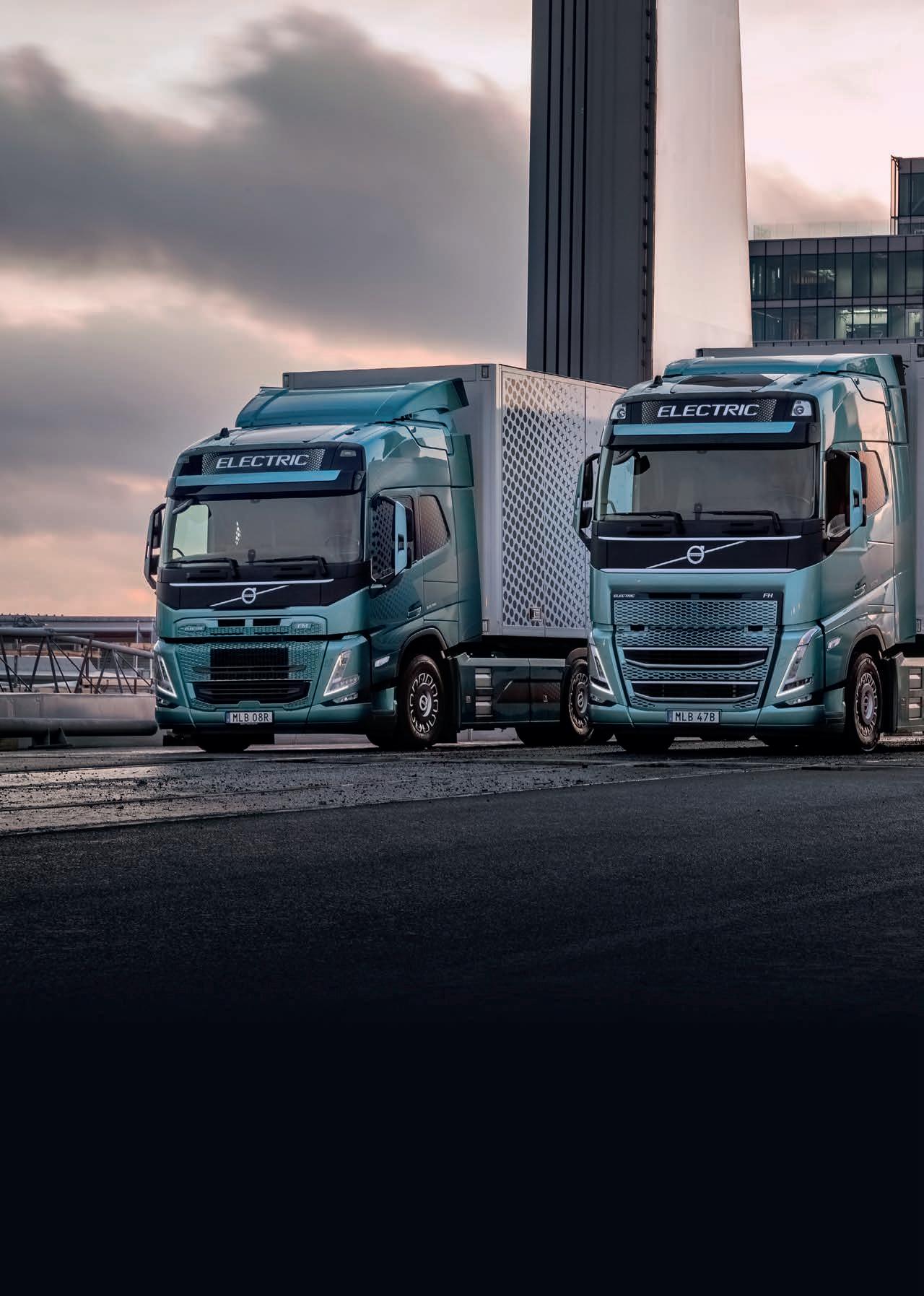
23 minute read
New words, new meanings, new directions
Story Wayne Munro
OVID, COVID, COVID….AND….COVID. THE NAME OF
the pandemic that’s cruelled the world these past 18 months just has to be THE word of the times. Behind it….a bunch of new buzzwords and catchphrases that also capture something of the spirit of this point in our history – Jacinda’s “team of five million,” for one. Then there’s the likes of ordinary old words that have taken on a new meaning – like “lockdown.”
And the creation of new word combos – “travel bubble,” for example. And then there’s “community transmission” and “contact tracing.”
But outside of all that COVID stuff, the global trucking industry has come up with a few new trending terms and buzzwords of its own. So many people and organisations in our industry are now “on journeys” – a journey to decarbonisation, a journey to fossil-free transport…. to zero emissions, to sustainability, to electromobility, to “a hydrogen future.”
Shrug off these words as “mere words” at your own risk: Sure, some people in the industry have been saying some of these words for a few years now….
But here in New Zealand we can still feel as far removed from all of this “future stuff” as we have been from the worst of COVID-19’s horrors.
And yes, it is safe to say that the chances of NZ’s truck fleet suddenly going green – and ditching diesel combustion-engined trucks in great numbers in favour of battery electric, hydrogen fuel cell electric or even 100% bio-diesel alternatives – is about as likely as this Labour Government doing what they’re ‘sposed to and investing all of the trucking industry’s RUCs on the roads. LOL.
So what’s the big deal? Well, in the global truckmaking industry it seems like, as the saying goes: “Shit’s getting real!” Where before there may have been “just words,” now there’s substance – substantive action even – piling in behind those words.
And mate, they’re no longer talking timeframes that are far off in the distant future: The bosses of global giants Volvo Trucks and Daimler Truck are, for example, banking on a dramatic switch to hydrogen fuel cell heavy trucks beginning in Europe within the next six years!
Their belief is such that it’s led to something that only recently would have seemed unthinkable: Two of the world’s Big Three truckmakers (the other one being Traton) getting together in a jointventure partnership to speed their development of hydrogen fuel cells for long-haul trucks.
New words, new meanings,
Electromobility is now definitely “a thing” with Volvo globally. In Europe it is now taking orders for these electric FM, FH and FMX models
Within 10 years Volvo aims to have fully-electric models accounting for half of its European truck sales. And Volvo and Daimler are both saying they will achieve zero emissions by 2040….or 2050 at the outside.
Even the Aussies, whose trucking industry sometimes seems as stoically old-school as they come, are getting on board. Well, some of them (in high places in the industry) are anyway – as this year’s annual Volvo Group Australia media conference makes clear.
It’s a sign of the times that the conference sees a mix of some journos turning-up at VGA’s Brisbane HQ in person, while others (like me and a number of inter-state stay-at-homes) tune in online. (Which brings to mind another new term – Zoom call).
In this media conference, sustainability, electromobility and decarbonisation are frequently to the fore – leaving no doubt that they are very much front-of-mind with the VGA management team.
It begins with VGA president and CEO Martin Merrick opening the show, observing that trucking globally is “an industry in transition” – with the mother company not only managing things through the COVID-torn 2020 “in a very good way,” but also actually upping its game financially “to continue the execution of our transformation journey.
“Even with a sales decline of 22%, we delivered a margin of 8.4…. And, rather than COVID altering our strategy, we’ve accelerated the commercialisation of electric vehicles, whilst continuing to invest in our well-known technologies.
“In addition, we’ve announced some exciting partnerships – the hydrogen fuel cell JV with Daimler; H2Accelerate with Daimler, Shell and others (including Iveco) – which is all about investing in the infrastructure and distribution to really accelerate the adoption of fuel cell technology.
“And let’s not forget our partnerships with Samsung (to develop truck battery packs), NVIDIA (to develop artificial intelligence for autonomous trucking)…and not to forget our strategic alliance with Isuzu.
“And on top of all this, creating a new business area: Volvo Energy – to lead our battery and infrastructure strategy to support the development of electromobility.
“We have performed to transform and we will continue to do so – investing in where it really matters globally…and locally.”
Talk of all these partnerships prompts another catchphrase from Merrick and a couple of his management team: “Partnership is the new leadership.”
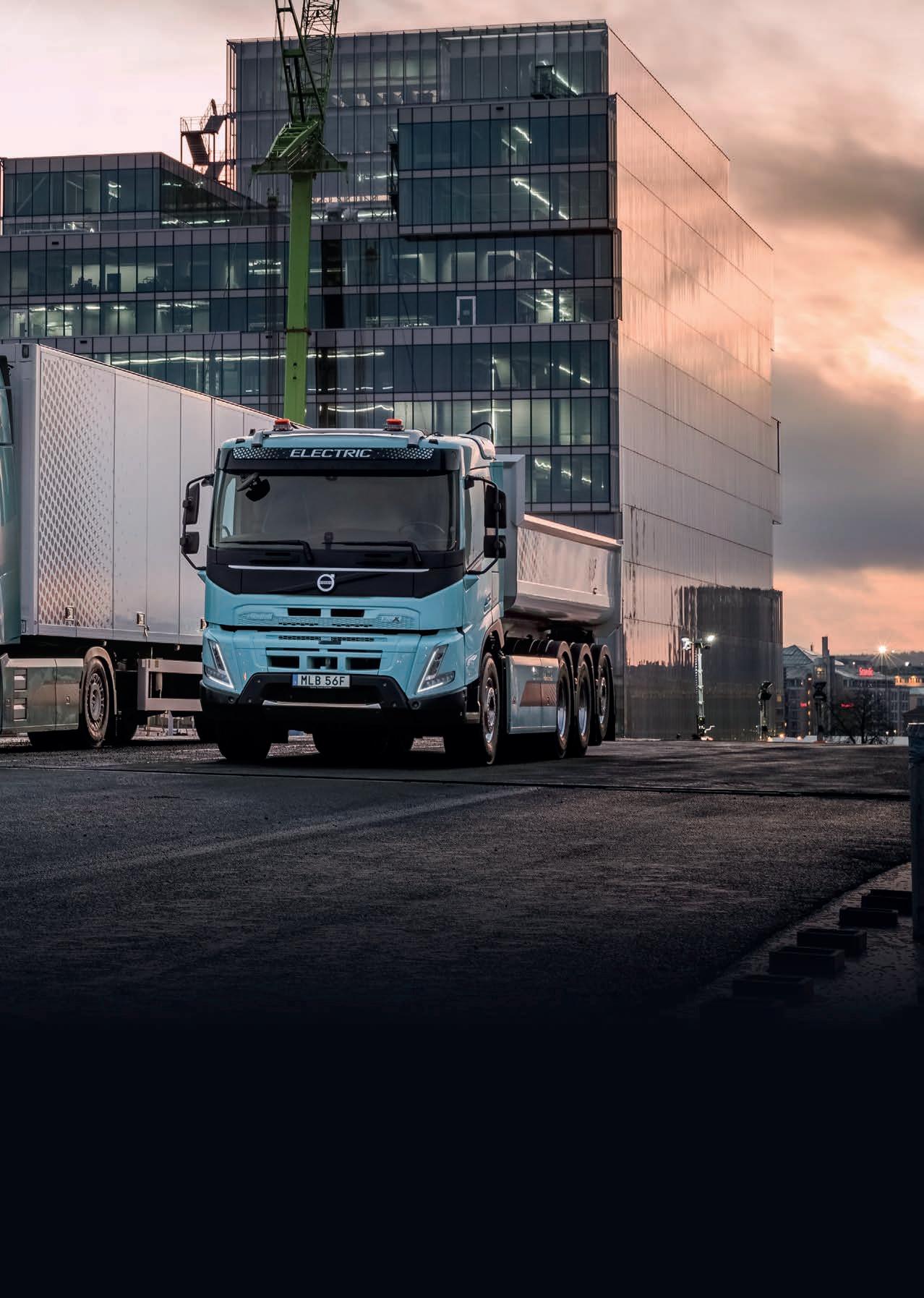
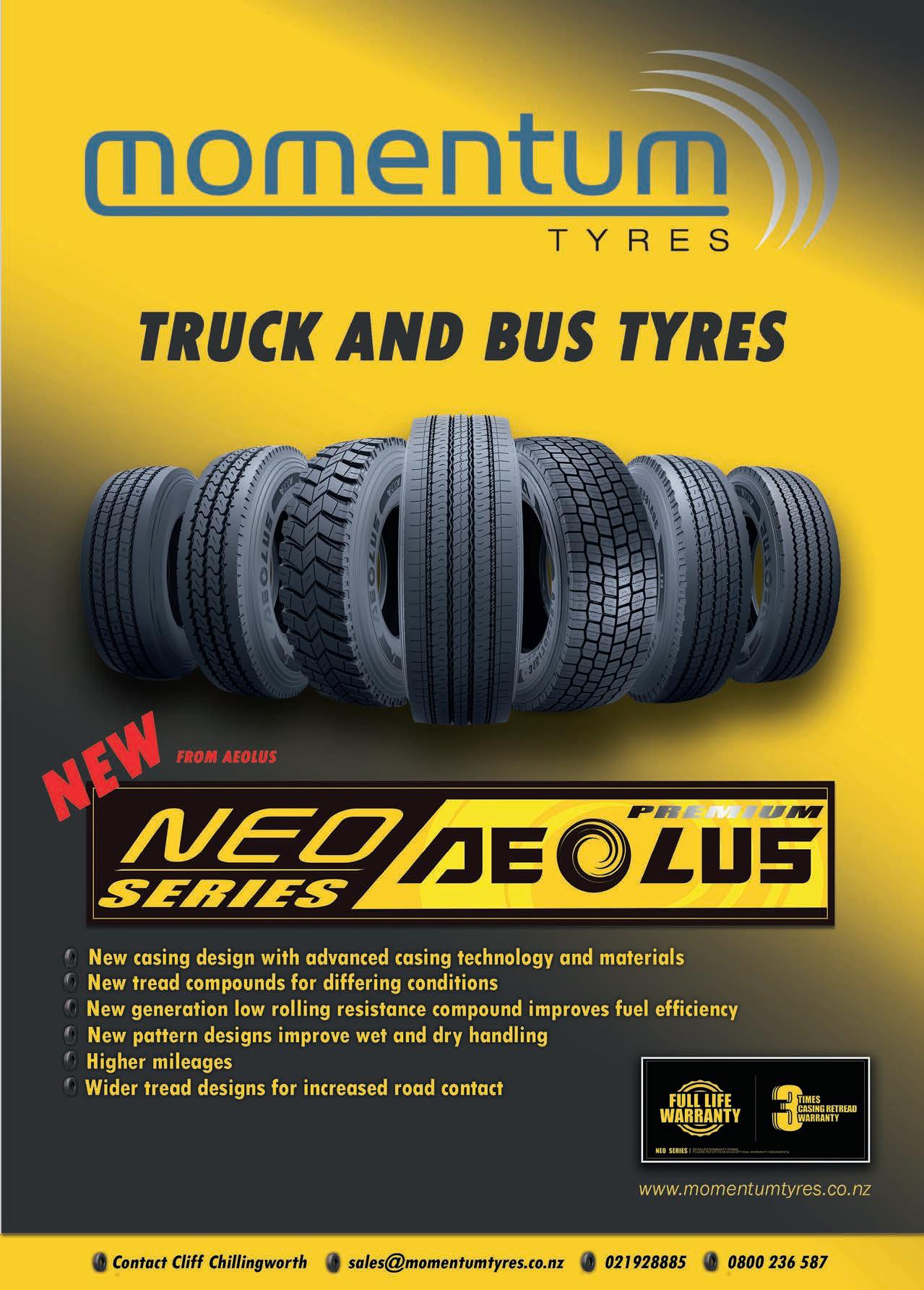
Volvo Group Australia CEO and president Martin Merrick has reason to be happy – with new products galore this year, including entire model ranges of renewed/upgraded Macks and Volvos...and the launch of the all-new Mack Anthem
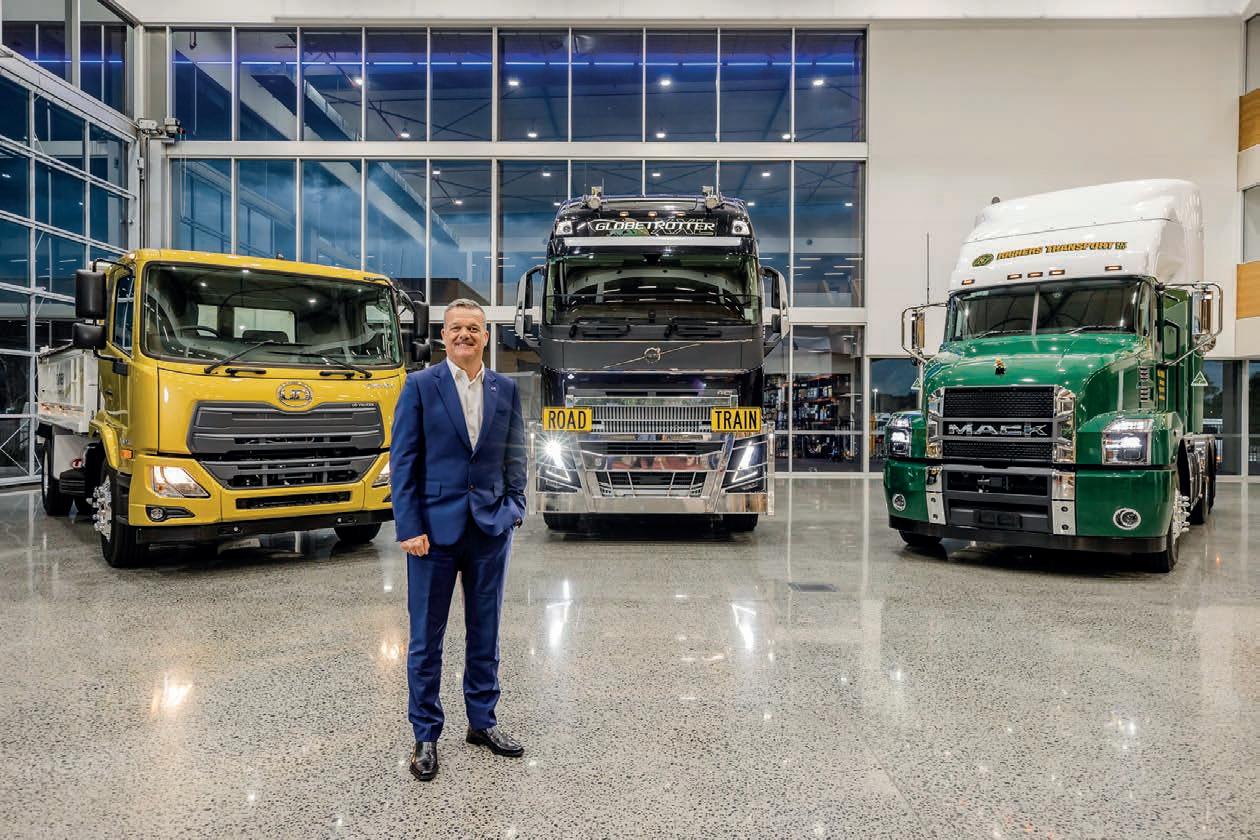
VGA’s VP of sales, strategy and support Paul Illmer – whose whole presentation is entitled “Transformation” – explains a little of what this partnership business is all about: “What this amounts to – in really simple terms – is the company is just asking the question more and more: ‘Well, do we make it? Or do we buy it? Or do we partner?’
“I think ‘partnership is the new leadership’ is a very important phrase. And we’re also in the age of experimentation as well, when it comes to some of this new technology.
“NVIDIA, for example: They take care of our…self-driving technology – both the processes and the software – when it comes to autonomous vehicles.
“Our JV with Daimler – which will see us develop faster than if we did that on our own.
“Samsung will take care of our next generation of batteries – and they are a fantastic company to partner with, which will give us a really good competitive advantage.
“And H2Accelerate – the combination of some companies in Europe looking to bring hydrogen fuel networks to fruition faster. And I would think we’d probably end up doing the same thing here.”
The partnership thing arises as well when Merrick takes the microphone as the stand-in head of the Mack brand (only until a new VP is appointed): He stresses the importance of partnerships as they effect the new Mack Anthem and the revision of the Mack range.
Now, there is always a palpable pride with VGA’s Mack people about their “Strayan” versions of the North American Bulldogs. Merrick starts off mildly: “We build Mack trucks here at Wacol for Australia and NZ that you just don’t see anywhere else in the world.”
And this, he says, is very much set to continue: “Further to the release of the Mack Anthem and the evolution of the Mack range we will continue to invest in the Mack product for Australia and NZ – to ensure we remain competitive with our hard product, safety technology and emission standards.”
That’s being enabled by cold, hard cash: A “compelling business case to our colleagues in North America” has earned a commitment from Mack HQ to invest around $100million in the Aussie product range over the next three years: “And that’s on top of what we see here today.”
That is, the new Mack Anthem – a truck that Merrick says is “not an American Mack Anthem – it’s an Australian Mack Anthem.” Launched after years of VGA development and investment – the new Macks are, he says, “designed for the driver and built for our customers’ business.”
Jeff Hammane, VP Group Trucks Technology (GTT) – “we’re the engineering people” – lets his pride shine through when he talks about just how much work has gone into Australianising the Anthem: “It looks the same – we intended that – but that is not an American truck.
“We invested heavily for many years in this project and we made this truck better – and in the process of doing that, we even made the American truck better! Because what they learnt from our testing, from our evaluation, from the processes we went through. They actually put that into the US truck…”
GTT started that process by showing Aussie Mack customers a mockup of the Anthem – and asking for their opinions: “The customers told us what they thought – so we went back to the drawing board and we changed a lot of things in that truck. What we’ve delivered now is what the customer asked for…
“At the end of this we delivered an Anthem that looks like an American truck, it has the name…it’s not the same. It’s a better truck. It’s…yep, whether the Americans like it or not – it’s a better truck.”
Martin Merrick details its attributes: There are fuel efficiency improvements courtesy of the MP8 engine and the mDrive AMT, plus
Above: For now, the focus is on optimising the fuel efficiency of the Volvo Group Australia’s trucks, across its brands....but electric trucks are coming Right: The Aussies say that this Mack Anthem is better than the American original
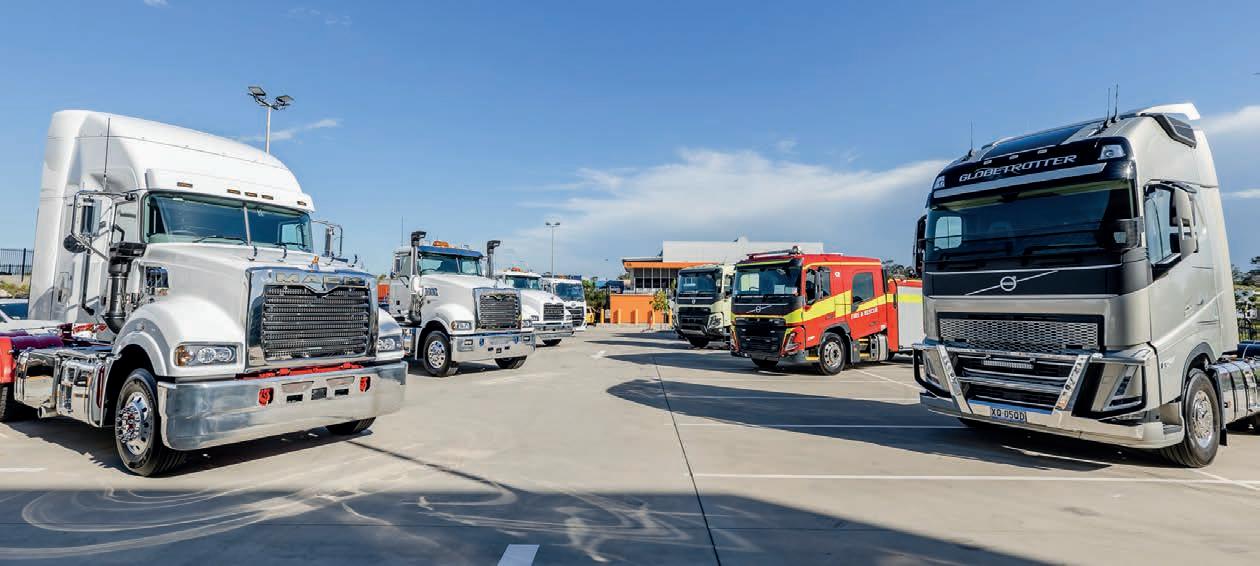
improved aerodynamics and the all-Mack drivelines.
The new electronic architecture that’s a key part of the new range enables “a host of new system updates – including the new mDrive HD and extreme HD transmissions, which add two new super-low gear ratios to the AMT for low-speed manoeuvrability.
The improved technology onboard also allows the addition of predictive cruise control in the Anthem and Trident models.
And safety, he says, “is our No. 1 priority. And safety is always important at Mack…we build our trucks for usability, comfort and safety. So we design our trucks with both inherent and active safety measures to give our customers peace of mind and prevent collisions.
“We say ‘built like a Mack truck.’ But that doesn’t mean we shy away from partnerships. Partnerships are the new leadership, which is why we have partnered with Bendix – to bring our customers an advanced safety solution in the Bendix Wingman Fusion.
“These features represent significant progress on our journey to prevent collisions.”
There is one slightly jarring note at the end of Merrick’s Mack presentation – when one of the in-person media attendees politely asks: “Why don’t you have a driver’s airbag?”
Merrick has to admit: “It’s a very good question. As I said earlier – safety’s our No. 1 priority. We will never be satisfied and we’re on a journey to ensure that we have zero accidents. So we’re focusing now that we will prevent collisions…and of course that airbag will come – but we’re on that journey…
“What I have presented today is a major step forward and a significant step in preventing collisions.”
Yes, but how far away might a driver’s airbag be? “We’re investing over $100m over the next few years and we have, of course, to look at emission standards and safety… We don’t share the product development at an early stage – but watch this space.”
What the 2021 Macks – the all-new Anthem, plus the upgraded Metro-Liner, Super-Liner and Titan – all do have is an updated, improved cab….with a new dash, instrument panel, steering wheel, driver’s seat, trim, sleeper and storage.
There’s a five-inch colour digital display as the centrepiece of the dash to provide info, key controls have been relocated from the dash to within easy reach, the “industry-first” flat-bottom steering wheel provides more clearance for the driver to slide in and out of the driver’s seat and there’s 35% more space (and more headroom).
The new Anthem and the “evolution” Mack models have now been on tour in Australia, showing them off to customers, and NZ importer Motor Truck Distributors is running a similar roadshow here, Merrick says.
The good news for NZ Mack buyers is that, he adds: “We’ve developed the Mack Anthem 8x4 rigid spec specifically for the NZ market – to meet NZ regulations.”
With Volvo Trucks now taking orders in Europe for electric versions of its complete heavy-duty range – with volume production to start next year – VGA’s VP Gary Bone makes the point that as the Group continues “to invest heavily in more climate-friendly transport solutions….we will, of course, benefit from that investment here in Australia.
“Whilst diesel will continue to play a big role in the Australian market – and we will be turning every stone to improve fuel efficiency within our range of diesel-powered trucks – we’re also exploring and investing in alternative fuels and electromobility.
“Our primary task…is to ease the transition to electrified vehicles by offering holistic solutions that include route planning, correctly specified vehicles, making sure we have the most effective charging infrastructure, financing and services to go along with this amazing new product.”
And, as he puts it, “In Australia our journey with electric trucks has already begun” – with a six-month trial involving two Volvo FL Electric 16-tonne 4x2s working in an urban delivery environment for Linfox. They have eight-pallet bodies and run a 600-volt power system, with
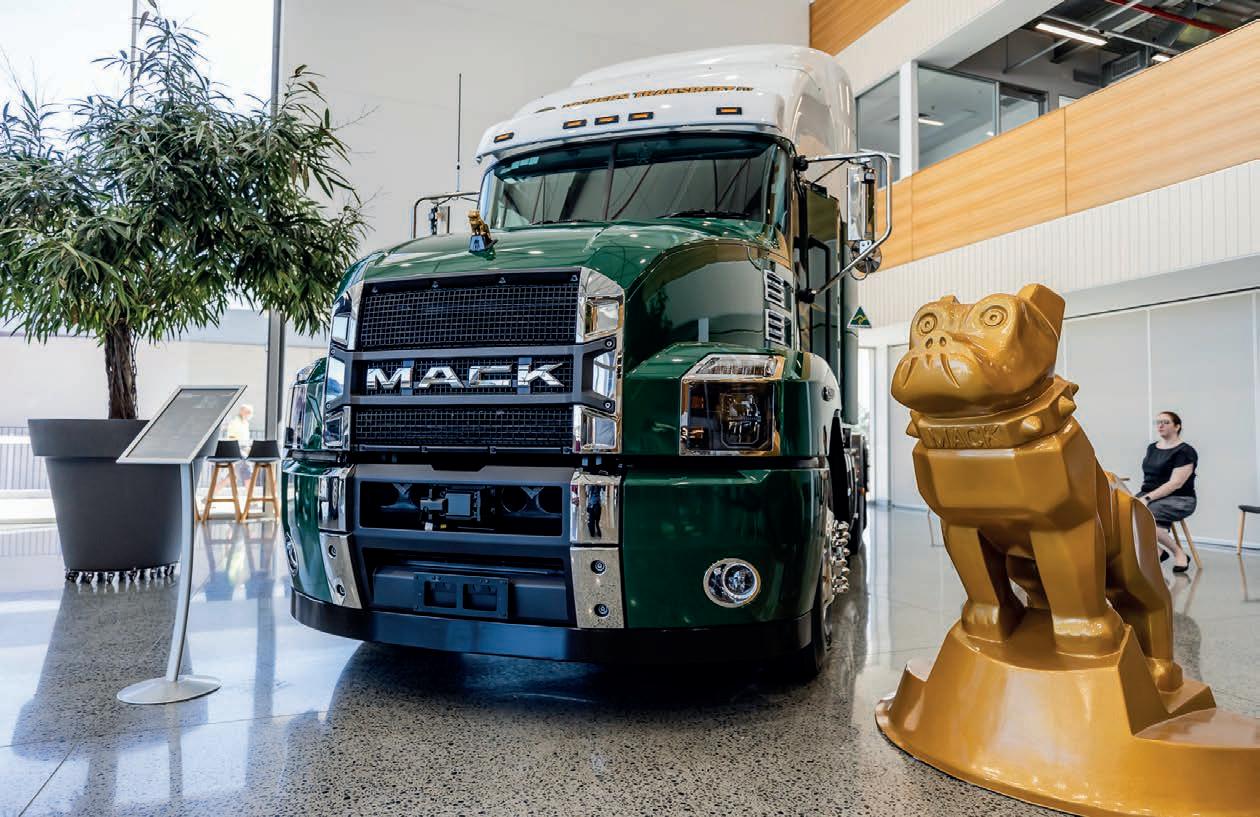
200 kilowatts of battery power.
Paul Illmer says that the VGA “transformation journey” can be summarised with a few key messages: “We’re developing a decarbonisation roadmap here at VGA. Electromobility is a priority in certain segments… The internal combustion engine will be here to stay for quite some time. Electromobility slots into some segments perfectly – in some it makes no sense.
“Sustainability is going to be the thread that runs through this company. Now that we have the launch of our electromobility journey and some of the other things that we’re doing globally that we can draw from, this is a really good opportunity for us to create a more carbon-neutral company – not only globally, but locally as well.”
In the lifecycle of a truck – from its production to its disposal – “the majority of the carbon is emitted of course in use, from the tailpipe, So that’s where the Group is starting.”
Following the CAST concept – that is, common architecture, shared technology – the Volvo’s electromobility push began in 2015 with electric buses: “So what happened was we developed batteries, electric motors, architecture, software, ECUs and created the Volvo bus.”
CAST then applies the components, the architecture and so on across the Group’s brands and products – all “making their journey from internal combustion to electric.”
Most recently, that transition has been applied to create what Volvo says is “the most complete commercial electric truck range in the industry,” with electric FH, FM and FMX models recently joining the already-launched FL and FE Electrics.
And, says Illmer, “it’s not just battery-electric we’re talking about… there has been a bit of a tipping point towards hydrogen….so it’s hydrogen as well.
“We’re also looking at bio-fuel – biodiesel: There’s been some good activity in NZ on that. And liquefied natural gas is still on offer… in Europe at the moment, and we’re looking to see if there’s an opportunity to deploy that locally.
“It’s really different energy sources for different applications, for different customers – and where they’re located.”
Illmer is at pains to point out that, “this isn’t just about the vehicles. To an extent, you know, the trucks are kind of the easiest part here – because they’re developed…and we put them in service. It’s everything around it – that then is our moment of truth: If we deliver on our promises to the customers…or we don’t.”
The creation of the likes of Volvo Energy provides wraparound services that Illmer’s team can tap into from the global group.
The current Linfox electric truck trial, for instance, was preceded by two years of preparation – into how the electric Volvos’ operation in Australia might differ from the European experience: “We knew what they were looking to do in Europe when it comes to electromobility, but of course we have unique applications for a unique market.”
Extensive data was gathered from the diesel-fuelled Linfox trucks doing the same work, then used to simulate electric versus diesel performance.
The current trial is, he says, “our introduction to then understand how we then commercialise this in a good way….so we keep our brand promise: To give customers the same support and experience as they get today with a diesel truck.”
Plugging into the global Volvo Group experience and systems is a big help, Illmer reckons – accessing Volvo’s battery configuration tool, for instance: “We plug in a customer’s route, we look at their diminishing load….how many stops they’ll make….how long they’ll be stopped for. We look at topography, average speeds…and then that gives us an indication if the truck will make it from A to B.
“So out of 10 routes, for example, we may end up with seven or eight that could be usable…. It’ll tell us the route in year one…and then in year 10. So it accounts for battery degradation year on year.”
Then, of course, there’s the Group’s experience in training drivers how best to use electric trucks – “in a safe way, but also in an efficient way. What we know is that electric vehicles at this stage don’t like hills very much – and they don’t like sitting on constant
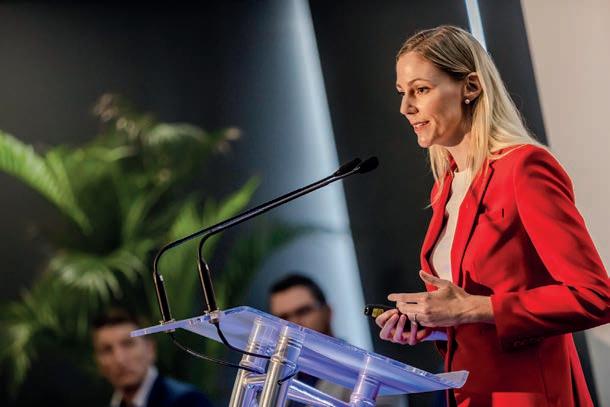
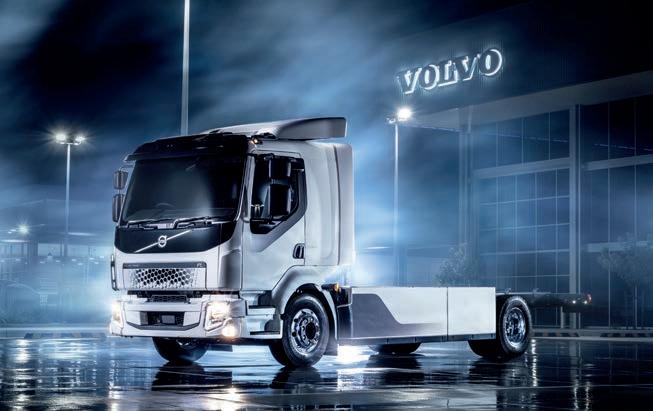
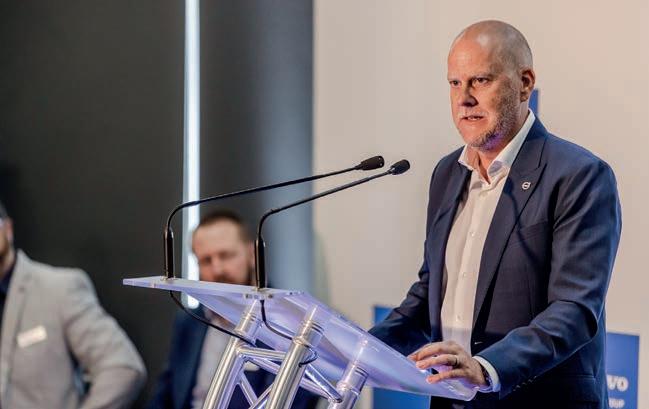
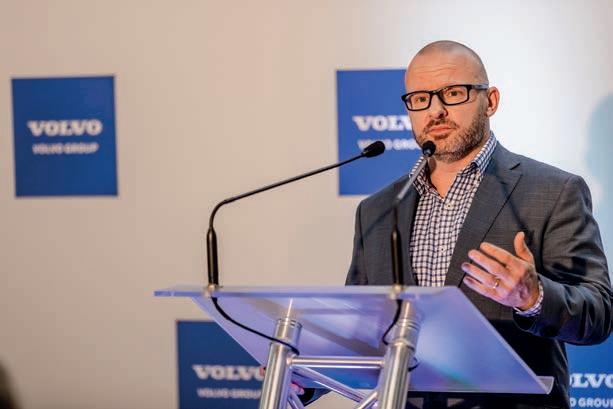
cruise speeds. So, electric vehicles are going to make great sense on FMCG urban deliveries, but in some applications they won’t make sense.”
Again he stresses: “It’s not just about the truck – we’re building competence and abilities in different areas to the business that we never had before. We don’t have all the answers, but we’re learning every day.”
Meantime though, back in the fossil-fuel-powered world, VGA also has a lot going on – like next month’s start of full-scale production in Brisbane of Volvo’s new heavy-duty range. Four new models, says Gary Bone, “designed with the driver in mind.
“Drivers are our everyday heroes of the transport industry, which has shone through in recent times – showing how they are essential to keep our country moving through this pandemic.
“It’s up to them to get the job done both safely and efficiently. And at the same time there is a shortage of highly-skilled drivers. With the help of our new truck range the driver is at the centre of our attention. Giving him or her the best possible working and resting environment.
“And this puts our customers in a stronger position to attract the very best drivers in the industry. Our trucks are tailormade to support their operations and the truck drivers who have to get it done.
“We have found ways to improve everything the driver does to interact with the product, the new and improved dashboard being the perfect example – right in front of you, the new digital instrument display with up to four different views. A brand-new side display mounted to the left-hand side of the instrument panel helping you with navigation and all ancillary applications. A new seat-mounted I-Shift gear selector, with all driving modes.”
There’s a relocated passenger-side corner camera automatically activated when the left-turn indicator is engaged, or switched on manually to assist on narrow lanes or construction sites.
Bone details the completely new cabs for the new FM and FMX models, with better ergonomic space, improved steering wheel adjustment and new controls for the traction control system – plus larger windows, narrower and straighter A-pillars, a lowered doorline on the side windows and an optional window in the passenger door.
The FM is now equipped with the same mirrors as the FH, with improved vision and reduced blind-spots.
For the FH and FH16, upgraded cabs include an XXL. And the downhill cruise control is improved, allowing the driver to use the foundation brakes without disengaging the system.
And, says Bone: “We now have adaptive cruise control – but at the next level….so it works down to 0km/h. Previously on Volvo trucks this had been set at 15k.”
The down to zero capability is, as he points out, “very, very helpful in dense traffic.” To restart it has “driver-initiated go” – the driver needing to either press a resume button or touch the throttle pedal. An autonomous restart when the vehicle ahead moved away would, he explains, be outside the Volvo safety philosophy: “In charge and in support.”
The Australian offer of the fuel-saving I-Save uses the D13 turbocompound engine – “our most fuel-efficient engine ever and it has already exceeded our initial expectations.” The combination of the new engine technology and the GPS-based I-See predictive cruise control – standard with I-Save – delivers the fuel savings.
Euro customers have, he says, reported higher fuel savings than Volvo promised – while also retaining “excellent driveability.”
VGA’s UD Trucks VP, Lauren Downs, reckons that the team looking after Volvo’s Japanese brand in Australasia produced “a pretty tremendous effort” in 2020.
“In Australia, in the heavy-duty segment, last year UD Trucks was one of only two brands to increase its volumes – up 3% in a market that declined by almost 17%.
“Last year we delivered more than 100 units into the NZ market, for the third consecutive year – in a market that overall was down.”
That’s all well and good, but the burning question for most media people attending this press conference is what happens next for the UD brand in these parts – in the wake of the global strategic alliance
Clockwise from opposite page, top left: Volvo’s electromobility journey has begun in Australia with a trial of two FL Electrics....UD VP Lauren Downs says the make’s sale to Isuzu doesn’t change a lot in Australia and NZ.....UD’s Quon and Croner models will be allowed to compete head to head with Isuzu competitors....Paul Illmer reckons it’s Volvo’s wraparound services that are important in electromobility....Gary Bone says the new Volvo range is designed to look after drivers
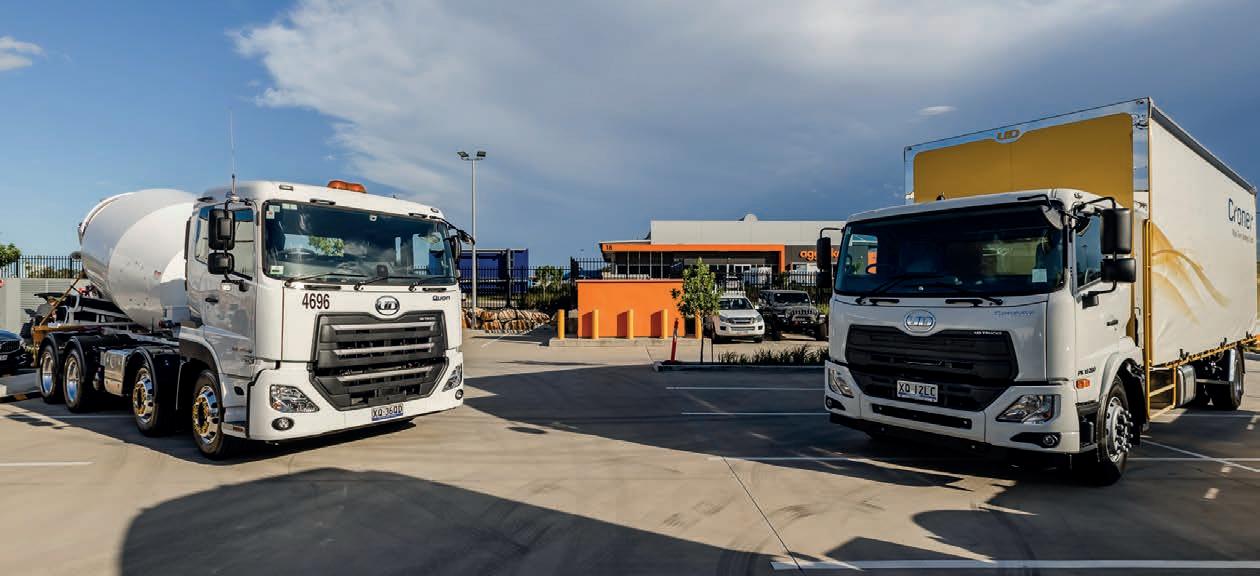
between Isuzu and the Volvo Group that was announced at the end of last year. The deal included the takeover last month of UD by Isuzu.
So, what does the alliance and the sale of the UD brand mean for the make’s representation and its current and future customers in Australia and NZ.
Okay, so Downs says that the deal is evidence that “partnerships truly are the new leadership… Technology is advancing at such a rapid rate….so in terms of A) – keeping up – but, more than that, staying ahead of the pack – often it’s partnerships that are required.”
The deal, she says, is “not just a clearcut sale.” The over-arching Isuzu/Volvo alliance is in place for a minimum of 20 years….. and, says Downs, “what it means and how the alliance comes to life will be different in different markets. What makes sense in one market or one country….may not make sense in another.”
The Japanese truck industry is, for instance, heading towards “some of the most stringent emissions standards in the world. So again, the joint technology development there makes sense. In other markets, UD will become the importer of the Volvo product.
“Here in Australia, the changes will actually be very limited. And I say that because both brands are….actually very strong and quite successful in their own rights.
“VGA will be the sole importer and the sole distributor of the UD product here in Australia, just as Motor Truck Distributors will be the same in the NZ market.”
The sales and service networks will also, she says, “stay exactly the same. And when it comes to our products, there are currently no plans to change the UD product lineup or strategy here – for Australia and NZ.
“A number of products recently were developed and designed specifically for our market and specifically for our customers.
“At UD we genuinely believe that competition does bring innovation, which is a good thing.
“And here – in Australia and NZ – Isuzu will remain a direct competitor. So again, that does not change.”
Downs says that so far things haven’t changed in terms of the VGA’s relationship with UD Trucks HQ: “We’re actually dealing with the exact same team that we were in previous years – in engineering, the team we put in requests for product modification changes…
“We were also really pleased that some projects already under way that were paused because of COVID….are now being restarted. So we’re already getting the sense that the way of working, how we put in requests for product changes, requests for new products for example, it’s actually going to all work in the same way.”
A question from the media: What will happen if Isuzu’s 8x4 market share gets severely impacted by the UD Quon 8x4 – what influence might Isuzu in Australia have on that?
Says Downs: “It’s a very good question….Isuzu will remain a direct competitor and obviously our 8x4 product is targeting the Japanese sector.
“So we are rivals – we are direct competitors. We’ve invested as UD in that product – and it was designed specifically for the Australian market. So in our minds it’s full steam ahead and there’s not so much we can do.”
Downs points out “the other important thing….there will be a joint (Isuzu/Volvo) alliance office formed and there will be facilities of this office in both Sweden and Japan. And there will be a board that oversees this alliance office – including the presidents and key executives of both brands.
“So they’ll be a part of key decisionmaking….on information sharing, technology sharing and when it makes sense to do joint developments on technologies. So you get the sense that neither brand is just going to have free range and do what they want.
“As the sole importer of UD product, Volvo Group is fully committed to the success and the future of UD Trucks in Australia and we do see the future as being extremely bright.”
Martin Merrick says that “the messaging on Volvo Group’s future is very clear: We are on a journey towards fossil-free transport solutions by 2040. And our journey has started in Australia.
“That said, the internal combustion engine will be with us here in Australia for a very long time to come. We will continue to invest and innovate so that this engine will become cleaner and more efficient. And perhaps with the research that’s going on today in the innovation into alternative fuels, perhaps we’ll see an internal combustion engine that’s fossil-free.”
The Scots-born Merrick, who has clocked-up 33 years in the Volvo Group, reckons what he’s involved with right now “is by far the most exciting period of my career and over this decade we will all be part of an incredible transformation – not just of the transport industry, but for the world we live in.” T&D







